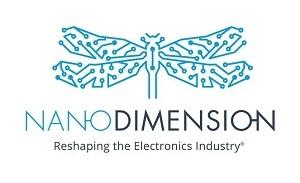GIS, based in Cambridge, is a leading developer and supplier of high-performance control electronics, software, and ink delivery systems. Founded in 2006, the company is well known for inventing and delivering state-of-the-art 2D and 3D printing inkjet hardware and unique operating software. GIS has more than 130 customers around the world with a focus on high-value, precision-oriented applications such as specialized direct-to-container packaging, printed electronics functional fluids, and 3D printing, which can all be controlled by the proprietary software system – Atlas.
GIS is a growing company with revenue for the 12 months ended March 31, 2021, of approximately $10 million and a gross margin of 51%. Nano Dimension paid GIS shareholders $18.1 million in cash. In addition, it will pay between $1.3 million to $10.7 million within the next 27 months, if GIS achieves certain financial performance over this period.
Technology collaborations are expected to accelerate product development
The foundation of Nano Dimension’s vision is to provide advanced, digital production technologies for Additive Manufacturing (AM) and 3D printed electronics that meet the speed and efficiency standards of Industry 4.0 fabrication demands. The combined expertise of both Nano Dimension and GIS will enable faster product development, including the technology that is at the center of next-generation systems.
“GIS’ ink delivery technology and software are essential to any ink deposition methodology within our AME and AM solutions. GIS’ research and development roadmap will help us to deliver better resolution and higher productivity in our industrial 3D printing solutions,” commented Yoav Stern, Chairman and Chief Executive Officer of Nano Dimension. “As a result of this acquisition, we will be able to improve our technology’s performance and time to market. The combined company will own and have access to innovative and yet-to-be-released printing technologies, providing value and leading-edge solutions tailored to our customers’ needs and giving us a clear competitive advantage.”
Commercial synergies will contribute to Nano Dimension’s growth
GIS will continue to develop and sell its breakthrough hardware and software globally while taking advantage of Nano Dimension’s go-to-market resources and global reach. This combination will enable GIS to more effectively penetrate fast-growing printing markets. Emerging AM market segments especially rely on GIS’ level of precision that enables advanced industrial applications. In parallel, the merger will provide Nano Dimension with exposure to new market segments and application areas.
“We are very excited to be joining a company that recognizes the excellence of our technologies, our passion for innovation and matches our customer-focused culture,” stated Nick Geddes, Founder, and CEO of GIS. “Working together, we will be pushing the envelope beyond existing printing capabilities in ways our customers will gain advantages that are unmatched yet.”
“This is a win-win for both organizations,” stated Mr. Stern. “Combining forces and resources will enable growth for the integrated company at an accelerated pace. This merger will upgrade Nano Dimension’s product line with GIS’ innovative hardware and software. In parallel, our go-to-market network will expand GIS’ commercial horizon and customer base. The combination of both companies will further leverage the customer-focused culture across the entire organization.”
Sullivan & Worcester Tel Aviv and Edwin Coe LLP (London) acted as legal counsel to Nano Dimension in connection with the acquisition.
About Nano Dimension
Nano Dimension’s (Nasdaq: NNDM) vision is to transform the electronics and similar additive manufacturing sectors through the development and delivery of environmentally friendly and economically efficient additive manufacturing, Industry 4.0 solution, while enabling a one-production-step-conversion of digital designs into functioning devices – on-demand, anytime, anywhere.
Nano Dimension plans to execute on this vision by building an eco-friendly and intelligent distributed network of additively manufacturing self-learning & self-improving systems, which are designed to deliver a superior ROI to their owners as well as to Nano Dimension shareholders and stakeholders.
The DragonFly IV® system serves cross-industry High-Performance Electronic Devices (Hi-PEDs®) fabrication needs, by depositing proprietary conductive and dielectric materials simultaneously, while concurrently integrating in-situ capacitors, antennas, coils, transformers, and electromechanical components. The outcomes are Hi-PEDs® which are integral enablers of autonomous intelligent drones, cars, satellites, smartphones, and in vivo medical devices. These products enable iterative development, IP safety, fast time-to-market, and device performance gains. With DragonFly IV®, a revolution happens at the click of a button, allowing customers to go from CAD to a functional device in a matter of hours instead of weeks; creating products with better performance; reducing the size and weight of electronic parts and devices; enabling innovation; and, critically important, protecting IP, all the while limiting environmental pollution and chemical waste.
Nano Dimension’s Fabrica 2.0 micro additive manufacturing system enables the production of microparts based on a Digital Light Processor (DLP) engine that achieves repeatable micron levels resolution. The Fabrica 2.0 is engineered with a patented array of sensors that allows a closed feedback loop, using proprietary materials to achieve very high accuracy while remaining a cost-effective mass manufacturing solution. It is used in the areas of micron-level resolution of medical devices, micro-optics, semi-conductors, micro-electronics, micro-electro-mechanical systems (MEMS), microfluidics, and life sciences instruments.
For more information, please visit www.nano-di.com
